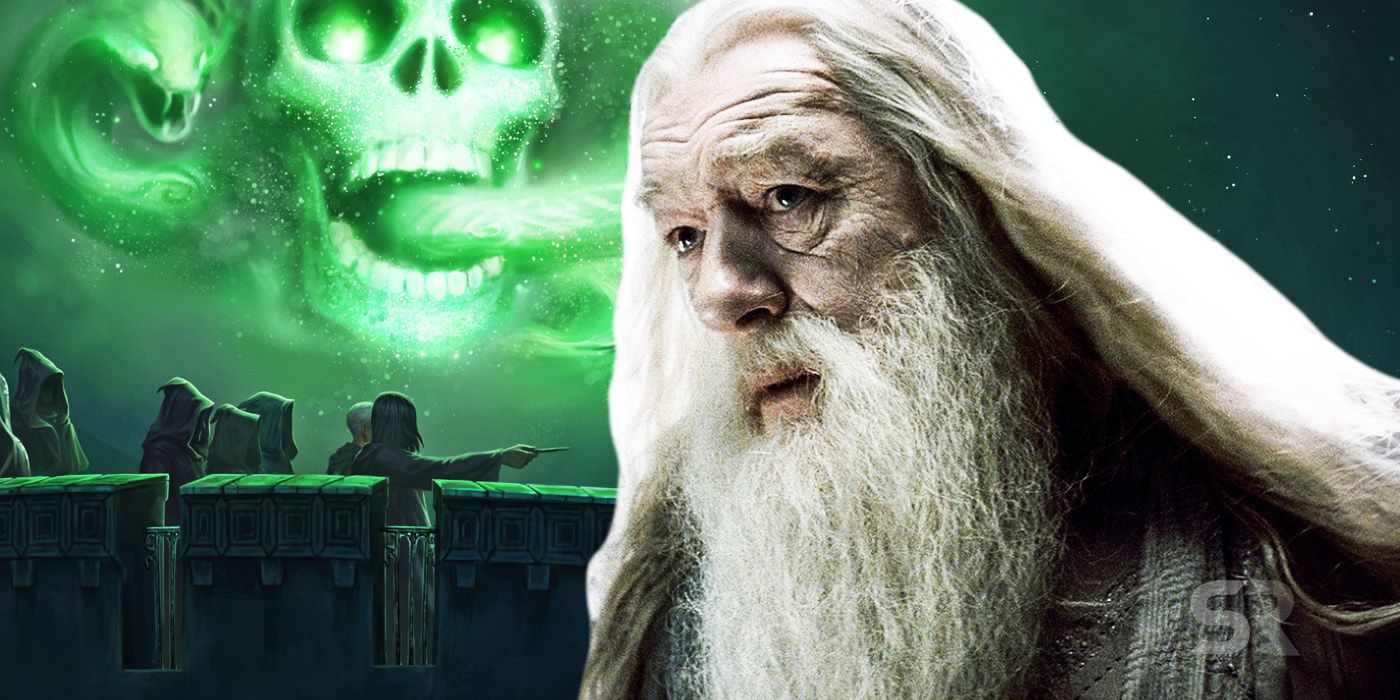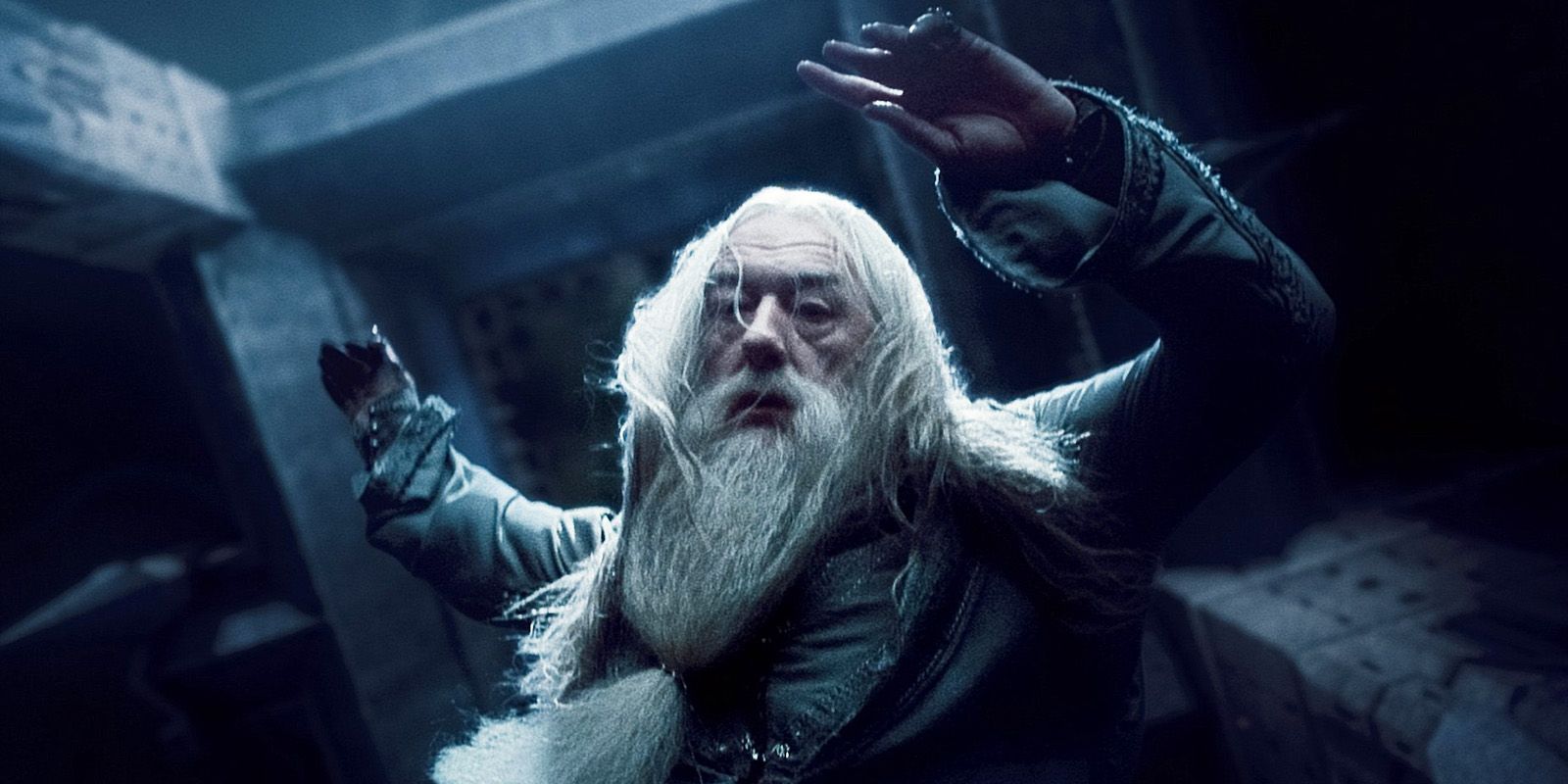Although the Harry Potter movie series did a good job in adapting J.K. Rowling’s Wizarding World to the big screen, it had to either omit or change many scenes to better fit the format – and also for dramatic purposes. Such is the case of the death of Albus Dumbledore in Harry Potter and the Half-Blood Prince, which was changed in ways that fans weren’t totally on board with and that actually hurt the scene.
Readers around the world were introduced to the Wizarding World in 1997, when Harry Potter and the Philosopher’s Stone was published. The book was followed by six more, telling the story of “the boy who lived” and his battle against the darkest wizard of all: Lord Voldemort. The books were later adapted into eight movies (with Harry Potter and the Deathly Hallows being split into two), bringing the world of Harry Potter to a new audience. As it happens with every cinematic adaptation of a book, many characters, scenes, and events were left out of the movies, and some others were changed for different reasons.
One of the most emotional moments in the Harry Potter series is Dumbledore’s death. The beloved Hogwarts headmaster and the one wizard Voldemort was afraid of met his fate in the sixth book, but his death in the movie was very different to the one in the source material, and it actually hurt the original scene.
The Real Reason Dumbledore’s Death Was Changed In The Movie
Albus Dumbledore died during the Battle of the Astronomy Tower (also known as the Battle of the Lightning-Struck Tower). As Lucius Malfoy failed to obtain the prophecy during the Battle of the Ministry of Magic, Voldemort ordered Draco Malfoy to kill Dumbledore, knowing very well that he couldn’t do it given that Dumbledore’s power and skills were above his. Narcissa Malfoy, fearing it was all a plan to have Malfoy killed in revenge against Lucius, asked Severus Snape to help Draco and complete the mission if he couldn’t. This deal was sealed with an Unbreakable Vow.
After obtaining one of the horcruxes from a cave, Harry and Dumbledore returned to Hogsmeade, where Madam Rosmerta warned them that the Dark Mark appeared over the Astronomy Tower. Dumbledore and Harry borrowed her broomsticks and headed up there, ad Dumbledore immobilized Harry with a silent full body-bind curse and covered him with the invisibility cloak. Dumbledore then hid Harry in a dark bunker underneath the platform. Draco arrived, along with other Death Eaters, but couldn’t bring himself to kill Dumbledore. Snape suddenly appeared and, after Dumbledore pleaded with him (as to not raise suspicion over Snape’s real allegiance and the overall plan), Snape proceeded to kill him. The scene played out differently in the movie: Snape and Narcissa did have a deal, and Draco was followed by Death Eaters (though not the same ones as in the book), but the rest was changed in ways that didn’t appeal to fans.
Dumbledore and Harry apparated to the top platform of the Astronomy Tower – they never came across with Rosmerta, nor was the Dark Mark over the tower. Harry wasn’t frozen by Dumbledore, and was instead instructed to go and hide below the platform. Snape suddenly appeared next to Harry and told him to remain silent, then proceeded upstairs to kill Dumbledore. In addition to all that, the battle of the Order of the Phoenix versus the Death Eaters wasn’t included, as director David Yates wanted to avoid repetition with the Battle of Hogwarts, coming in the eighth movie. It was very out of character for Harry to just remain quiet and not do anything while his mentor was being killed, though it can be justified by him trusting Snape would never kill Dumbledore. Neither Yates nor anyone else involved in Harry Potter and the Half-Blood Prince have revealed their reasoning behind these changes, but it could simply be due to narrative (and dramatic) purposes, giving Harry more reasons to dislike Snape, as he trusted him to save Dumbledore, though it ended up hurting the Dumbledore/Harry dynamic.


